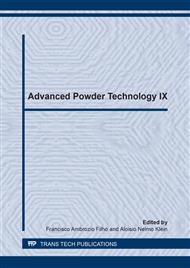p.226
p.232
p.239
p.245
p.250
p.256
p.262
p.268
p.274
Study of the Capacity in a Totally Permeable Hydrocyclone
Abstract:
Hydrocyclones are equipments that separate a discrete phase (solid, liquid or gas) from a continuous phase (liquid) by generating a centrifugal field. The objective of this work was to study, experimentally, the incorporation effect of cylindrical and conical permeable walls (CyCoFH) on an optimized geometry hydrocyclone (H11) to evaluate the equipment’s processing capacity. By inserting a filtering cone and cylinder, during the operation of these separators, besides the traditionally observed streams (underflow and overflow), there is an additional liquid stream resulting from the filtering process in the conical and cylindrical regions. Despite the low filtrate flow observed during this new equipment’s operation, it was found that the filtration is benefic to hydrocycloning. According to the main results, the CyCoFH hydrocyclone of lower permeability presented a greater processing capacity. The feed flow rate was 23% higher than the corresponding conventional hydrocyclone, in the same geometrical and operational conditions.
Info:
Periodical:
Pages:
250-255
Citation:
Online since:
December 2014
Keywords:
Price:
Сopyright:
© 2014 Trans Tech Publications Ltd. All Rights Reserved
Share:
Citation:


